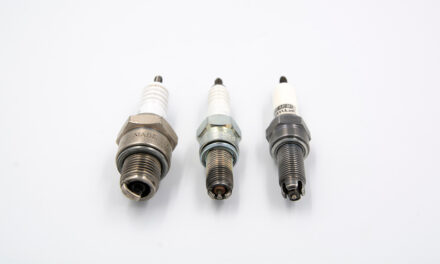The role of spark plugs in the engine is undeniable – they ignite the air-fuel mixture, making combustion possible. Over time, spark plugs degrade and need replacement to ensure efficient engine performance.
Fortunately, with the right tools and a bit of patience, you can tackle this task at home. This guide will walk you through changing your spark plugs safely and efficiently.
Tools and Materials Required:
- New spark plugs (refer to the vehicle’s manual for specifications)
- Spark plug socket and ratchet set
- Gap gauge
- Anti-seize compound
- Dielectric grease
Steps:
- Safety First: Before you begin, ensure the engine is cool. Working on a hot engine can lead to burns. Disconnect the vehicle battery to prevent accidental starts.
- Locate the Spark Plugs: Open the hood and locate the spark plug wires. They are usually thick, rubbery wires running to the engine’s side or top.
- Remove Spark Plug Wires: Gently twist and pull the spark plug wire boot to remove it. Remember to pull on the boot, not the wire, to avoid damage.
- Check the Spark Plug Gap: Using the gap gauge, check the gap on your new spark plug. Adjust if necessary to match the specifications in your vehicle’s manual.
- Remove Old Spark Plug: Insert the spark plug socket onto the old spark plug and turn counterclockwise to loosen and remove.
- Install New Spark Plug: Apply a tiny amount of anti-seize compound to the threads of the new spark plug. Hand-tighten, the spark plug into place, then use the ratchet to snug it up. Avoid over-tightening, which can damage the threads.
- Reconnect Spark Plug Wires: Apply a small amount of dielectric grease inside the spark plug wire boot. This ensures a good connection and makes future removal easier. Push the boot onto the spark plug until it clicks into place.
- Reconnect the Battery and Test: Reconnect the vehicle battery and start the engine. Listen for any irregularities in the engine’s sound, which might indicate a misfire.
Changing spark plugs can improve engine efficiency and performance. With the right tools and guidance, it’s a task that DIY enthusiasts can confidently tackle.

















